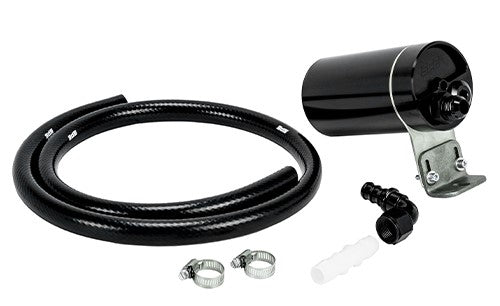Your Cart is Empty
FREE SHIPPING TO USA!*exclusions apply
FREE SHIPPING TO USA!*exclusions apply
This discussion will apply to all engines, not just the 6.7L Powerstroke, although the issues plague the 6.7L more than others.
Crank Case Ventilation systems are present in every internal combustion engine in one way or another. For the simplest systems, these gasses are vented to the atmosphere; for others (such as the 6.7L Power Stroke), they’re a bit more complex. To understand their use, we need first to discuss what they’re ventilating.
Piston-driven internal combustion engines use steel rings around each piston to control combustion gasses (the gasses that give the engine power). As the combustion event happens, the gasses expand in the combustion chamber, pushing the piston down the cylinder, turning the crankshaft, and therefore making power. Now pistons generally don’t seal well on their own. So, the seal comes from the steel piston compression rings installed in a grove around the outside perimeter of the piston. These rings aren’t perfect; some gasses will inevitably squeak past the rings and into the crankcase. These gasses (commonly called blow-by) make up the majority of the pressure within an engine’s crankcase.
This pressure has to go somewhere, and it’s going to take the path of least resistance. With a properly ventilated crankcase, these gasses won’t cause any damage; they’ll simply go down the path the CCV system provides. If there is no path or if the path is clogged, these gasses will find another way out. The most common path they take? Through a gasket. Once they break through a gasket, an oil leak ensues. A clogged CCV system-created oil leak is extremely common.
The most common system is a simple reroute into the intake. A vent in the valve covers routes the gasses to the air intake just behind the air filter. This style system has been in use for decades and is still in use today.
The second most common system involves essentially the same as we just mentioned, but an added filter is placed inline. The filter is there to catch any oil vapors.
Prior to today’s EGR-equipped engines, either of these systems worked just fine. The addition of a filter does a couple of things: For EGR-equipped engines; it helps reduce the amount of carbon buildup in the heads and intake manifold; for any diesel, it helps reduce the possibility of a runaway issue caused by the engine burning its own oil (reintroduced into the intake by the CCV system).
If you have a race engine, you need a filter. Race engines with race pistons have much higher piston-to-wall gaps and, therefore, significantly more blow-by. The possibility of a runaway is real. A filter, or catch can, as they’re commonly called, essentially eliminates that concern.
If you have a stock or near-stock engine with little blow-by, you don’t necessarily need a catch can/filter, although it’s a good idea to have one anyway.
Now if you have a 6.7L Powerstroke you’ve got a filter installed from the factory. The reason these CCV Filters are so infamous is due to lack of maintenance. They’re extremely easy to forget about. You likely won’t have any issues if you maintain yours as required. If you don’t, you’ll get oil leaks from areas like the upper oil pan. An upper oil pan leak is not an easy fix either. The engine has to come out of the truck. For 6.7L Powerstroke owners, especially, the use of an upgraded CCV system is an upgrade that you’ll hate yourself for NOT doing later on.
Check out our CCV fixes here: SPE 6.7L Powerstroke Engine Components
Comments will be approved before showing up.
